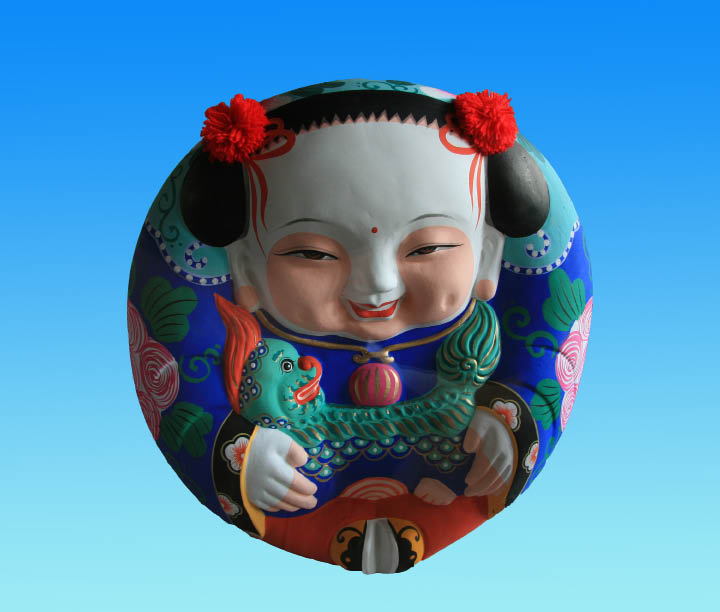|
Clay Figurines in China (II)
By staff reporter XING WEN
Huishan Clay Figurine
Huishan clay figurines are produced in the western suburb of Wuxi, Jiangsu Province, and are one of China's most famous folk arts, having a history stretching back over a thousand years.
The craft originated in the Southern Dynasties (420-589) and reached its peak in the Qing Dynasty (1644-1911). During the Qing, an artist made five clay figurines for Emperor Qianlong (1711-1799) and was rewarded with high praise from the royal family. The production of figurines went on to flourish in the reigns of emperors Tongzhi (1861-1875) and Guangxu (1875-1908), and when Empress Dowager Cixi celebrated her 60th birthday in 1895 Huishan craftsmen presented a gift set of exquisite sculptures. Huishan clay figurines were then designated as a tribute to the imperial court.
Huishan figurines differ from those of other localities in that they are always small and always feature a big head. They divide into two types – mold-pressed and hand-crafted. The cheaper, molded, figures often serve as children's toys while the hand-crafted pieces are more refined and original, often having the status of high-class art.
|

|
|
Iconic Da A Fu from Huishan. |
The characters depicted come mainly from legends and Chinese opera plots. Da A Fu, a plump boy holding a fish or a qilin (a mythical animal believed to punish the wicked), is the most popular figure in Huishan clay art. The legend goes that long, long ago, Huishan was plagued by a ferocious lion that devoured children, and the people prayed for help to get rid of the lion. One day, a god, disguised as a boy, fought the beast and finally subdued it.
To express appreciation and to commemorate the god's beneficence, local people started to make clay figures of their boy savior Da A Fu. One-third of the overall figure is taken up by Da A Fu's large head, with a face round as a full moon and big ears reaching down to his shoulders. It is an image implying happiness and good fortune. A further symbol of auspice is the fish or qilin that he holds.
The God of Longevity is another popular character. During festival periods these characters are bestsellers at local fairs, representing people's best wishes for family, friends and life.
Clay Figurine Zhang
Zhang clay figurines, one of Tianjin's most prestigious folk arts, has a history of 180 years since its origins in the Qing Dynasty.
The art takes its name from Zhang Mingshan (1826-1906), its initiator. Zhang, son of a poor family in Tianjin, was taught clay-sculpting skills as a child by his craftsman father and he went on to develop a great interest in creation in clay. He would observe people from different walks of life in different places and would work those observations into his sculpted pieces, all executed with outstanding skill. They say Zhang could chat to people and sculpt at the same time, producing a lifelike figure with a striking facial expression.
Zhang's skill was not limited to deftness: he brought originality and imagination to his work. His subject repertoire was wide and he would apply bright colors. Not content with sticking to traditional skills, Zhang Mingshan incorporated painting and wood-carving techniques as well, and studied operas to ensure that his opera-based figures would be vibrant and expressive.
During his lifetime, Zhang Mingshan created more than 10,000 clay figurines and won a high reputation. His offspring took up the baton and it is now in the hands of the fourth generation. Because of the superb craftsmanship and the rich cultural connotations they embody, Zhang clay figurines have become must-have souvenirs, appreciated by Chinese and foreign tourists alike.
| 